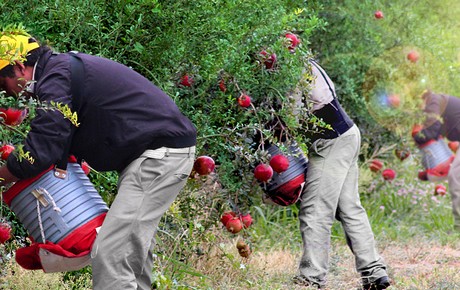You Know How We Can Grow A Pomegranate Tree From Seeds
Instructions to Grow A Pomegranate Tree Step by Step Process: Do You Love Fruits. On the off chance that Yes, So What natural products do you like the most. I adore a few foods grown from the ground is best one of them. Pomegranate (Punica granatum) began in the Middle East and has been known to flourish in hot parts of the world.
Related: 8 Best Health Benefits of Pomegranates.
The pomegranate is an antiquated organic product local to Persia, in what is currently cutting edge Iran. Once the plants were found by voyagers, individuals were rapidly planting pomegranate trees all through the areas of Asia, Africa, and Europe encompassing the Mediterranean Sea. Remember, however, that many pomegranates in the market are mixtures, which implies that their seeds may not create organic products indistinguishable to the parent.
Its prevalence comes from its magnificence as a fancy plant, gloating brilliant, orange-red blooms and gleaming foliage, and its tart, plump natural product. Pomegranate can be planted in the ground in regions with mellow winters or, on the off chance that you are in a territory with a colder atmosphere, you can develop it in a compartment, moving it inside amid the cool season. Pomegranate seeds for the most part sprout pretty effectively, and they can be begun inside once again the winter for planting outside in the spring.
Also Read: 14 Elegant Hanging Planters for Urban Homes
1. Pick the Variety
Pomegranate has assortments which demonstrate diverse tree size and developing needs. On the off chance that you have a huge garden, you may pick consistent pomegranate. Be that as it may, in the event that you don't have it, you can pick a midget assortment which has a littler size.
Ambrosia (large fruit) Eversweet (excellent for coastal areas)
Granada (early maturing) Ruby Red (late maturing)
Utah Sweet (very sweet)
2. Pick Type of Growing
You can pick on the most proficient method to develop pomegranate whether it's seeds, cutting, or seedling based planting. The most effortless route is to purchase the seedling from nearby nursery around your place.
3. Set up the Soil
The best soil to develop pomegranate is the one that has the daylight. Enough sun introduction is required for the place for developing pomegranate trees. Maintain a strategic distance from the shady place which can cover the trees from getting daylight.
Also Read: 13 Gardening Tips You Should Follow but No.10 is Stunning
4. Planting and Caring
It's an ideal opportunity to plant pomegranate seedling in the readied soil. You simply need to put the seedling under the dirt by uncovering the dirt around 60 cm profound. You need to water it consistently regular so the dirt keeps sodden and the seedling develops well. Include some compost, and evacuate all weeds around the tree.
5. Collecting Of Pomegranate
You can collect the natural products when they are developed. The sign is the particular shading originates from pomegranate skin. On the off chance that you tap the skin, there will be metallic sound turning out. The sign the organic products have developed as of now.
You can make pomegranate juice for day by day utilization and increase a few advantages from it. Pomegranate contains a cancer prevention agent which great at battling against free radicals.


























